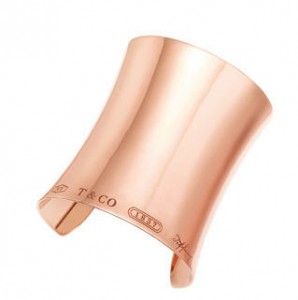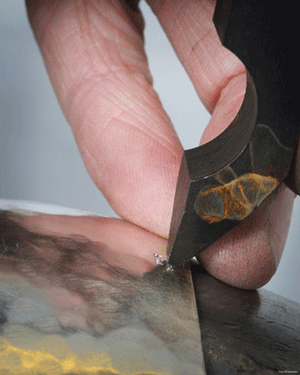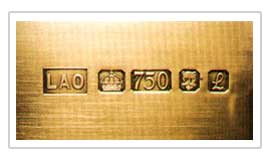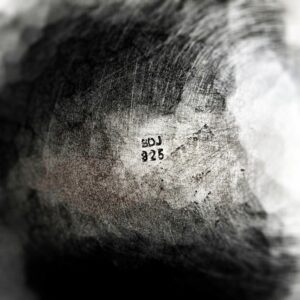 Tiffany has just launched their new metal Rubedo™. It’s a beautiful rose coloured metal, said to be lightweight but strong, with a smooth lustre. It should have the richness of gold, the malleability of silver and the warmth of copper – yet the components of the metal – also known as the alloy – is a secret. At least I haven’t been able to find any facts about what is in it, apart from other people guessing.
Tiffany has just launched their new metal Rubedo™. It’s a beautiful rose coloured metal, said to be lightweight but strong, with a smooth lustre. It should have the richness of gold, the malleability of silver and the warmth of copper – yet the components of the metal – also known as the alloy – is a secret. At least I haven’t been able to find any facts about what is in it, apart from other people guessing.
I’m a great believer in transparency, especially when it comes to metals. First and foremost you want to be sure that what you’re buying is in fact what it says it is – much like foods – you want to know what’s in it, right?
You want to make sure your metal doesn’t contain for example nickel, which can cause allergies.
That’s why I think it’s very important to make sure the alloy mix is accessible to everybody.
As I don’t know what’s in Tiffany’s new metal I can’t say anything about it. However, I can give you a little insight into the alloy and hallmarking of silver and gold.
 Alloy – a metal made by combining two or more metallic elements, esp. to give greater strength or resistance to corrosion.
Alloy – a metal made by combining two or more metallic elements, esp. to give greater strength or resistance to corrosion.
For example sterling silver is an alloy of silver & copper, 14k gold is an alloy of gold and silver.
A metals alloy is usually stamped or marked into the metal to show and guarantee the purity of the metal.
The number explains the amount of main metal (if it’s gold or silver) in per mill (1:1000). So for gold: 18k is marked 750, which means it is 750:1000 parts gold the rest is other metals (usually silver and copper)14K is 585:1000 gold, 9k is 375:1000 gold.
Sterling silver is marked 925 and is 925:1000 silver
Hallmarking
 Unfortunately, as there are different rules to control this in different countries, there’s not one easy way to find out.
Unfortunately, as there are different rules to control this in different countries, there’s not one easy way to find out.
You can read more about the European Hallmarking Conventions Common Control Mark here.
But in most countries, every gold- & silversmith has to register with their countries Assay Office to get a Makers Mark or Sponsors Mark. The Makers Mark is usually a combination of the letters in their name (mine is SDJ) and it is stamped into every piece they make.
As I’m registered with both the danish and british assay office, they can use that information to control that I don’t mark metals wrong. So, in Denmark the Assay Office will come to see me unannounced and take a sample to test. In the UK I have to send everything to the Assay office for individual testing and marking.
All the metal suppliers are tested regularly as well, so the control is very tight in each of these countries.
 The best way to find out what alloy your gold and silver are, is to look for both a Makers Mark and an Alloy mark.
The best way to find out what alloy your gold and silver are, is to look for both a Makers Mark and an Alloy mark.
Coming back to Tiffany’s new alloy, I think this it’s a welcome innovation in the jewellery world, but my hopes are that they will reveal what exactly it’s made of, for the benefits of the consumer.